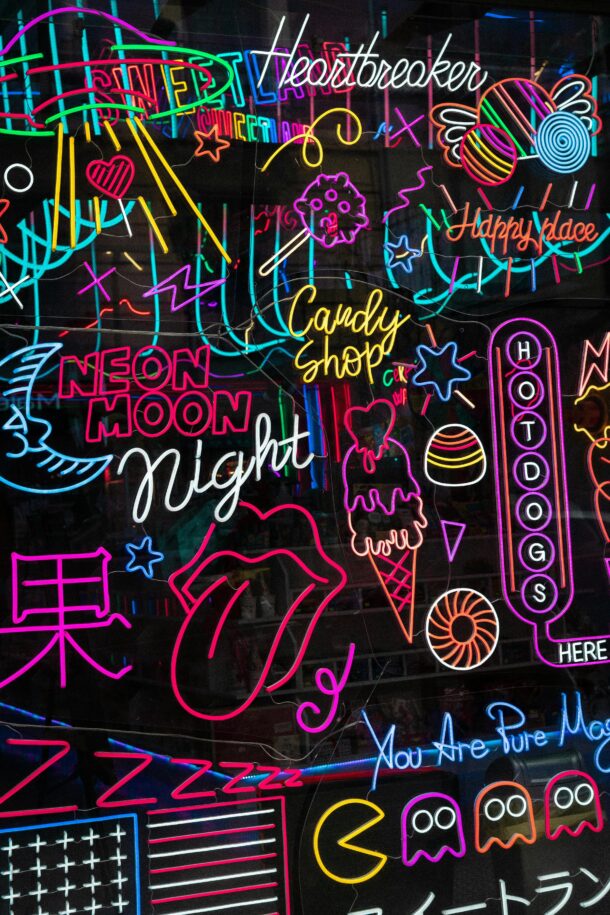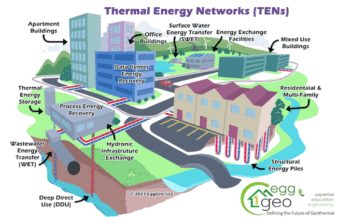Custom LED signs are becoming an increasingly popular choice for businesses looking to attract attention and convey messages in an eye-catching and efficient manner. As technology advances and consumer preferences evolve, LED signage is gaining traction due to its versatility, energy efficiency, and aesthetic appeal. In this article, we will explore how custom LED signs are manufactured and why they are becoming a popular item for manufacturers. We will also examine the growing demand for lit signage and its impact on various industries.

The Popularity of Custom LED Signs
Custom LED signs are revolutionizing the way businesses communicate with their audiences. These signs are used in a variety of settings, from storefronts and restaurants to events and trade shows, due to their ability to grab attention and deliver messages effectively.
Benefits of Custom LED Signs
- Energy Efficiency: LED lights consume significantly less energy compared to traditional lighting options, resulting in lower energy costs and a reduced carbon footprint.
- Versatility: LED signs can be customized to fit any design, size, or shape, making them suitable for a wide range of applications. Businesses can tailor their signs to match their branding and messaging needs.
- Durability: LED lights have a long lifespan, often lasting up to 50,000 hours or more. This durability reduces the need for frequent replacements and maintenance, providing long-term value.
- Brightness and Visibility: LED signs offer superior brightness and visibility, making them ideal for attracting attention both day and night. This is especially beneficial for businesses that rely on foot traffic and visual appeal.
- Eco-Friendly: LED lights are free from hazardous materials such as mercury, making them an environmentally friendly choice for businesses committed to sustainability.
Increasing Demand for Lit Signage
The demand for lit signage is on the rise as businesses recognize the value of impactful visual communication. According to a report by Grand View Research, the global digital signage market is expected to reach $31.71 billion by 2025, driven by the growing adoption of LED technology and digital displays across various sectors.
Industries such as retail, hospitality, and entertainment are particularly keen on leveraging LED signs to enhance customer engagement and create memorable brand experiences. As a result, manufacturers are increasingly focusing on producing high-quality, custom LED signs to meet this growing demand.
How Custom LED Signs Are Manufactured
The manufacturing process for custom LED signs involves several stages, each critical to producing high-quality signage that meets customer specifications. Let’s explore the steps involved in creating these dynamic and visually appealing signs.
1. Design and Planning
The first step in manufacturing custom LED signs is the design and planning phase. This involves working closely with the client to understand their branding, messaging, and design preferences. During this stage, manufacturers create detailed blueprints and mock-ups that outline the sign’s dimensions, colors, and layout.
- Client Consultation: Discuss the client’s requirements, including desired sign size, colors, and specific messaging or graphics.
- Design Software: Utilize advanced design software to create digital renderings and mock-ups of the sign. This allows clients to visualize the final product and make any necessary adjustments before production begins.
- Material Selection: Choose the appropriate materials for the sign, such as acrylic, metal, or polycarbonate, based on the client’s preferences and intended use.
2. Fabrication and Assembly
Once the design is finalized, the fabrication and assembly process begins. This stage involves cutting, shaping, and assembling the sign components to create the final product.
- Cutting and Shaping: Use precision cutting tools, such as CNC machines or laser cutters, to shape the sign’s components according to the design specifications.
- LED Module Installation: Install LED modules onto the sign’s backing material. The placement of LEDs is crucial for achieving uniform brightness and illumination.
- Wiring and Electrical Components: Integrate wiring and electrical components to ensure the sign functions properly. This includes connecting LEDs to power sources and incorporating control systems for programmable features.
- Quality Control: Conduct thorough quality control checks to ensure that all components are assembled correctly and meet industry standards. This includes testing the sign’s illumination and functionality.
3. Finishing and Customization
After assembly, the sign undergoes finishing and customization processes to achieve the desired aesthetic and functionality.
- Surface Treatment: Apply surface treatments, such as painting or coating, to enhance the sign’s appearance and protect it from environmental elements.
- Graphics and Branding: Add graphics, logos, and branding elements to the sign using techniques like screen printing or digital printing.
- Additional Features: Incorporate any additional features, such as dimming controls, motion sensors, or remote control capabilities, to enhance the sign’s versatility.
Table: Comparison of LED and Traditional Signage
| Feature | LED Signage | Traditional Signage |
| Energy Efficiency | High efficiency, low energy consumption | Lower efficiency, higher energy costs |
| Lifespan | Up to 50,000 hours | Shorter lifespan, frequent replacements |
| Brightness | Superior brightness and visibility | Limited brightness and visibility |
| Customization | Highly customizable | Limited customization options |
| Environmental Impact | Eco-friendly, no hazardous materials | May contain hazardous materials |
According to Statista, the global LED lighting market is projected to reach $100 billion by 2025, highlighting the widespread adoption of LED technology and its impact on various industries.
Marketing and Support for Custom LED Signage
As the demand for custom LED signage continues to grow, manufacturers must focus on effective marketing strategies and customer support to stand out in a competitive market. By leveraging innovative marketing techniques and providing exceptional service, manufacturers can attract new clients and build lasting relationships.
Effective Marketing Strategies
- Online Presence: Establish a strong online presence through a well-designed website and active social media channels. Showcase your portfolio of custom LED signs and highlight their unique features and benefits.
- Content Marketing: Create valuable content that educates potential clients about the advantages of LED signage. Blog posts, videos, and case studies can demonstrate your expertise and showcase successful projects.
- Trade Shows and Exhibitions: Participate in industry trade shows and exhibitions to showcase your products and connect with potential clients. These events offer opportunities for networking and generating leads.
- Client Testimonials: Leverage client testimonials and reviews to build trust and credibility. Positive feedback from satisfied customers can enhance your reputation and attract new business.
- Partnerships and Collaborations: Form partnerships with complementary businesses, such as interior designers or architects, to expand your reach and offer comprehensive solutions to clients.
Customer Support and Service
Providing exceptional customer support is crucial for building long-term relationships and ensuring client satisfaction.
- Consultation and Design Assistance: Offer consultation services to help clients design and conceptualize their custom LED signs. Provide expert guidance on materials, colors, and design elements.
- Installation and Maintenance: Provide installation services to ensure that the signs are set up correctly and safely. Offer maintenance packages to keep the signs in optimal condition and extend their lifespan.
- Technical Support: Offer technical support to address any issues or questions clients may have about their LED signs. Ensure that support is readily available through various channels, such as phone, email, or live chat.
Forbes states that businesses focusing on customer experience can achieve revenue increases of 4% to 8% above their market, emphasizing the importance of exceptional service in driving growth.
The Future of Custom LED Signage
As technology continues to evolve, the future of custom LED signage looks promising. Advancements in LED technology, such as increased energy efficiency and enhanced programmability, will further solidify the position of LED signs as a preferred choice for businesses worldwide.
Emerging Trends in LED Signage
- Smart Signage: Integration of smart technology, such as IoT connectivity and AI, will enable LED signs to offer interactive and personalized experiences for customers.
- Sustainable Solutions: Continued emphasis on sustainability will drive the development of eco-friendly LED signage solutions that minimize environmental impact.
- Enhanced Customization: Advancements in manufacturing techniques will allow for even greater customization, enabling businesses to create truly unique and personalized signs.
- Augmented Reality (AR): The incorporation of AR technology into LED signage will create immersive experiences that captivate audiences and enhance brand engagement.
- Increased Adoption in New Industries: As awareness of LED signage benefits grows, new industries such as healthcare, education, and transportation will increasingly adopt LED signs for various applications.
According to MarketWatch, the global digital signage market is expected to grow at a CAGR of 7.9% from 2021 to 2026, driven by the increasing demand for innovative and engaging visual communication solutions.
Conclusion
Custom LED signs are transforming the way businesses communicate with their audiences, offering a dynamic and effective solution for visual communication. The manufacturing process of LED signs involves meticulous planning, precise fabrication, and creative customization, resulting in high-quality signage that meets the unique needs of each client. As the popularity of LED signage continues to rise, manufacturers have an opportunity to capitalize on this trend by delivering exceptional products and services. By embracing innovation and focusing on customer satisfaction, manufacturers can drive growth and solidify their position in the thriving LED signage market. With the right strategies and dedication to excellence, the future of custom LED signage is bright and full of potential.




Join the conversation: